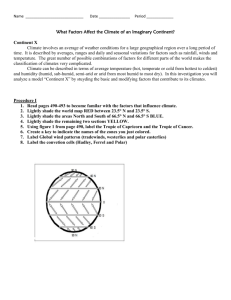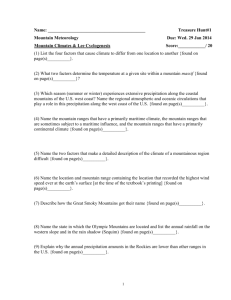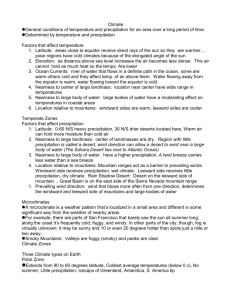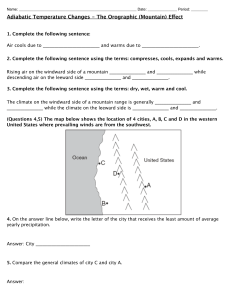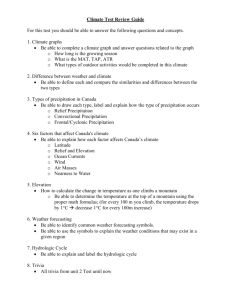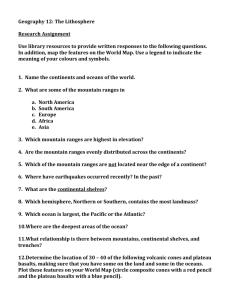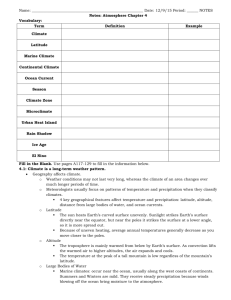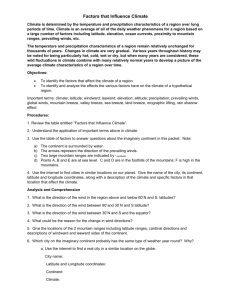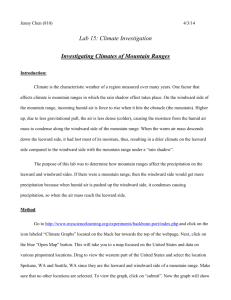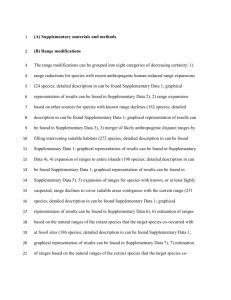HW: Factors that Affect Climate - Liberty Union High School District
advertisement
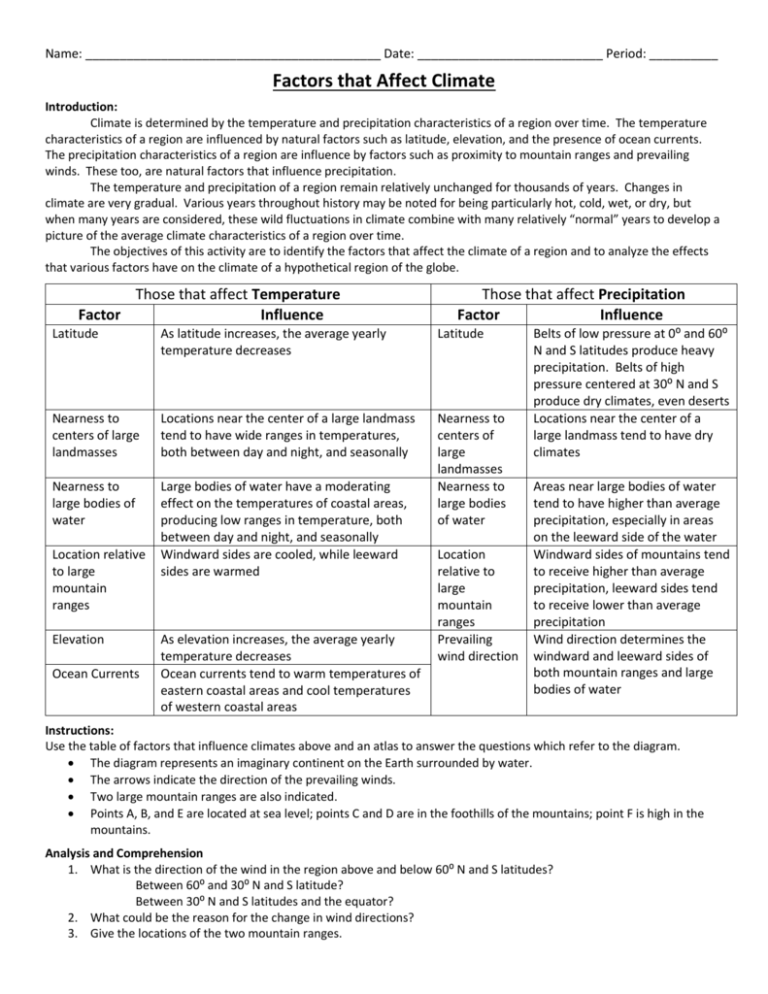
Name: ___________________________________________ Date: ___________________________ Period: __________ Factors that Affect Climate Introduction: Climate is determined by the temperature and precipitation characteristics of a region over time. The temperature characteristics of a region are influenced by natural factors such as latitude, elevation, and the presence of ocean currents. The precipitation characteristics of a region are influence by factors such as proximity to mountain ranges and prevailing winds. These too, are natural factors that influence precipitation. The temperature and precipitation of a region remain relatively unchanged for thousands of years. Changes in climate are very gradual. Various years throughout history may be noted for being particularly hot, cold, wet, or dry, but when many years are considered, these wild fluctuations in climate combine with many relatively “normal” years to develop a picture of the average climate characteristics of a region over time. The objectives of this activity are to identify the factors that affect the climate of a region and to analyze the effects that various factors have on the climate of a hypothetical region of the globe. Those that affect Temperature Factor Influence Those that affect Precipitation Factor Influence Latitude As latitude increases, the average yearly temperature decreases Latitude Nearness to centers of large landmasses Locations near the center of a large landmass tend to have wide ranges in temperatures, both between day and night, and seasonally Nearness to large bodies of water Large bodies of water have a moderating effect on the temperatures of coastal areas, producing low ranges in temperature, both between day and night, and seasonally Windward sides are cooled, while leeward sides are warmed Nearness to centers of large landmasses Nearness to large bodies of water Location relative to large mountain ranges Elevation Ocean Currents As elevation increases, the average yearly temperature decreases Ocean currents tend to warm temperatures of eastern coastal areas and cool temperatures of western coastal areas Location relative to large mountain ranges Prevailing wind direction Belts of low pressure at 0⁰ and 60⁰ N and S latitudes produce heavy precipitation. Belts of high pressure centered at 30⁰ N and S produce dry climates, even deserts Locations near the center of a large landmass tend to have dry climates Areas near large bodies of water tend to have higher than average precipitation, especially in areas on the leeward side of the water Windward sides of mountains tend to receive higher than average precipitation, leeward sides tend to receive lower than average precipitation Wind direction determines the windward and leeward sides of both mountain ranges and large bodies of water Instructions: Use the table of factors that influence climates above and an atlas to answer the questions which refer to the diagram. The diagram represents an imaginary continent on the Earth surrounded by water. The arrows indicate the direction of the prevailing winds. Two large mountain ranges are also indicated. Points A, B, and E are located at sea level; points C and D are in the foothills of the mountains; point F is high in the mountains. Analysis and Comprehension 1. What is the direction of the wind in the region above and below 60⁰ N and S latitudes? Between 60⁰ and 30⁰ N and S latitude? Between 30⁰ N and S latitudes and the equator? 2. What could be the reason for the change in wind directions? 3. Give the locations of the two mountain ranges. 4. Which city probably has the same type of weather year round? Why? a. Use an atlas to find a real city in a similar location on the globe. What is that city? 5. What factor would cause location F to have a colder yearly climate than any other location? a. Use an atlas to find a real city in a similar location on the globe. What is that city? 6. What 3 factors would cause location E to have the greatest annual rainfall? a. Use an atlas to find a real city in a similar location on the globe. What is that city? 7. Which location, C or D, would you expect to have the greater annual rainfall? 8. Which location, A or B, would you expect to have the greater range in temperature during the year? Explain your answer. 9. Location A is in the center of a large desert. What factor could account for its low annual precipitation? a. Use an atlas to find a real city in a similar location on the globe. What is that city? 10. What 3 factors would cause the climate in location D to be cooler than at location B?
